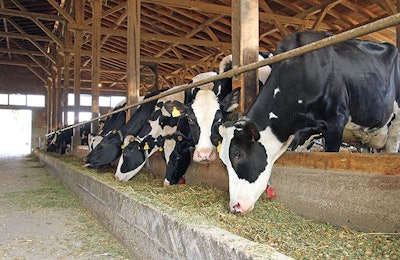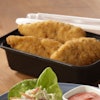
The large expansion of the canola crushing industry that occurred in North America since 2010 has increased the supply of canola meal for the animal feed industry. The U.S. Department of Agriculture (USDA) Economic Research Service reported canola meal production in 2016-17 in the U.S. was 1.3 million tons, increasing around 20 percent from the previous crop. Similarly, according to the Canadian Oilseed Processors Association, 4.9 million tons of canola were produced in Canada in 2016 — 14 percent more than the previous year.
The United States is the major importer of canola meal from Canada (73 percent of the production), which is fed mainly to dairy cows. Several research projects, founded by the Canola Council of Canada, have been conducted in public universities and research centers from the U.S. and Canada to maximize the use of canola meal in dairy diets.
Chemical composition
Researchers from the University of Manitoba, South Dakota State University and the U.S. Dairy Forage Research Center evaluated the nutritive composition and ruminal degradability of protein in canola meal samples from Canadian processing facilities.

This table shows the average contents of various components of canola meal, as percentage of dry matter (DM) basis.
Overall, canola meal is a good source of bypass protein (42.6 percent of total protein) and limiting amino acids (lysine and methionine) with low content in fat. One of the main canola meal issues is its high content on indigestible fiber. In vitro tests conducted in a commercial feed laboratory show that more than 50 percent of the fiber is indigestible (estimated after 120 hours of incubation).
Information about feeding canola meal to dairy cows is very scarce. South Dakota State University’s researchers published three studies that evaluated the effects of forage and starch on lactating dairy cow diets including canola meal as the main protein supplement.
Low or high forage
In the first study, the investigators determined the optimum dietary concentration of forage in the diets. The diets were formulated to include 42, 50, 58 or 66 percent forage concentrations (70 percent corn silage/30 percent alfalfa haylage) and 11 percent canola meal on a dry matter (DM) basis, and were similar in crude protein and metabolizable protein.
The results showed cows eating high-forage diets were more efficient. Feed efficiency increased linearly with increasing forage levels (from 1.36 to 1.57 lbs. energy-corrected milk/lbs. of intake). Milk production was similar among treatments (90.4 and 87.0 lbs./day of milk and energy-corrected milk) but intake linearly decreased with increasing forage concentration (from 63.1 to 55.9 lbs. of DM/d). Moreover, milk fat percentage and yield linearly increased with increasing dietary forage concentration.
Low or high starch
In the second study, the effect of starch concentration in the diets was evaluated. The diets contained 16.5 percent protein and either 21 or 27 percent of starch on a dry matter basis. Starch was reduced by replacing corn grain with soybean hulls and beet pulp.
Overall, lower starch content negatively affected cow performance. Comparing with low-starch diets, feeding high-starch diets increased DM intake (62.4 vs. 55.67 lbs. of DM/day), increased milk production (89.5 vs. 82.5 lbs./day), energy-corrected milk (94.21 vs. 90.2 lbs./day), protein yield (2.88 vs. 2.59 lbs./day), and reduced milk urea nitrogen (11.2 vs. 12.6 mg/dL). Interestingly, milk fat yield was not affected by starch level (3.42 lbs./day).
Corn grain or barley grain
Finally, in the third study, the researchers evaluated the effect of feeding either corn or barley starch at different ratios. Diets contained 36 percent corn silage and 20 percent alfalfa haylage, and the ratio of starch from ground corn and rolled barley within each treatment was 100:0, 67:33, 33:67, and 0:100.
There was no difference in cow performance between diets: dry matter intake (59.7 lbs./day), milk production (92.9 lbs./d), energy-corrected milk (91.5 lbs./d), milk protein yield (2.72 lbs./d), milk fat yield (3.20 lbs./d) nor feed efficiency (1.53) were not affected by starch type.
Corn silage or grass silage
Similarly, Canadian researchers evaluated the effects of forage source (corn silage vs. grass silage) on milk production of cows fed canola meal. This study was published in the American Dairy Science Association Annual Meeting held in Pittsburg in 2017.
The diets were formulated to include either 54.2 percent of corn silage or 36.6 percent of grass silage and 27.4 or 20.6 percent of canola meal on a DM basis, respectively. The diets contained the same level of energy (0.72 megacalories/lbs.) and protein (16.0 percent crude protein). The researchers found cows eating grass silage-based diets performed better.
Comparing with corn silage-based diet, cows fed the grass silage-based diets increased milk production (110.2 vs. 103.7 lbs./day), increased milk fat yield (3.951 vs 3.639 lbs./day) and reduced intake (58.4 vs. 62.0 kg/day). However, milk protein yield was not affected by diet (3.065 lbs./day).
In conclusion, these results show that canola meal perform better in low-forage, high-starch, and grass silage-based diets

















